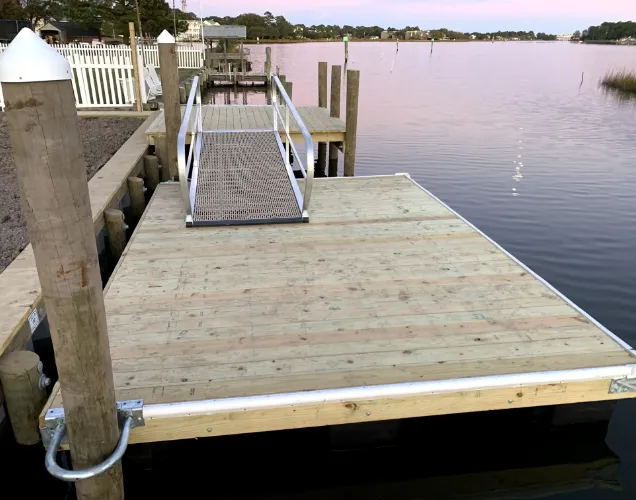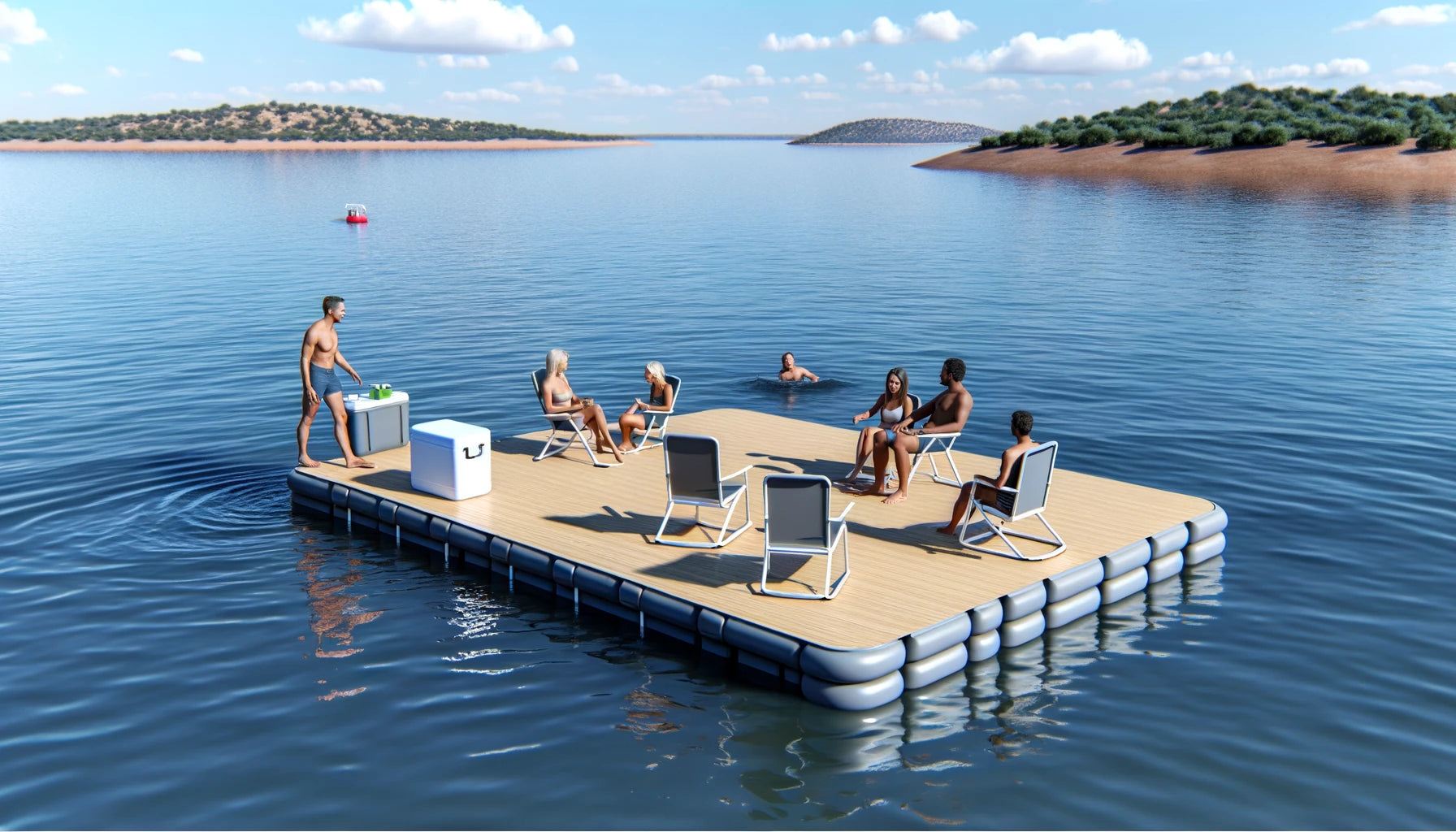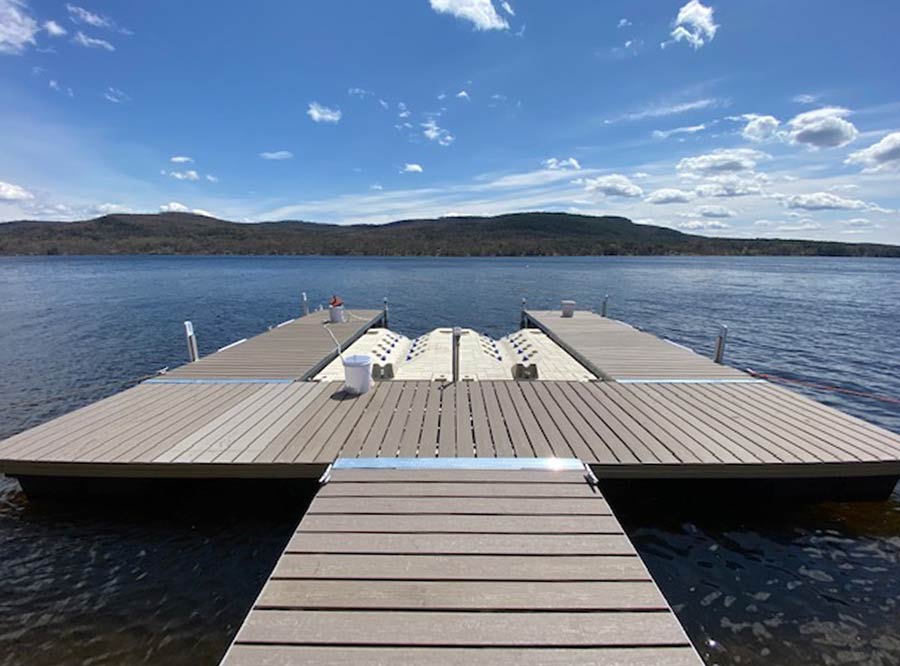The Ultimate Guide to Choosing the most effective Floating Docks
Choosing the optimal floating dock requires a thorough understanding of numerous aspects that influence both performance and longevity. Factors such as dock kinds, products, and essential features substantially influence your decision-making process.
Understanding Floating Dock Kind
When picking a floating dock, it is important to recognize the different kinds readily available, as each offers distinct functions and applications. Floating docks mostly fall under three classifications: modular, stationary, and pontoon docks.
Modular docks are made up of specific areas that can be easily constructed or reconfigured, making them excellent for transforming water levels and varied uses, such as leisure tasks or commercial operations. Their flexibility permits customization based on certain demands.

Pontoon docks are defined by their resilient structure, typically made up of several pontoons that provide security and assistance. They are particularly fit for larger vessels and are commonly made use of in marinas or for waterside residential or commercial properties. Recognizing these kinds help in picking one of the most proper floating dock to meet specific requirements, ensuring ideal functionality and safety and security.
Secret Materials for Toughness
Selecting the ideal materials for floating docks dramatically influences their sturdiness and durability. One of the most typical products include wood, plastic, steel, and composite products, each offering unique advantages and restrictions.
Timber, usually favored for its visual charm, needs regular upkeep to withstand moisture and decay. Pressure-treated lumber can enhance resistance to rot, however it may still be prone to insects and weathering.

Plastic docks, made from high-density polyethylene (HDPE), are resistant to deterioration, UV radiation, and effect, making them a prominent choice for seaside atmospheres. Their lightweight nature additionally assists in easy installment and relocation.
Metal docks, generally constructed from light weight aluminum or galvanized steel, offer exceptional stamina and longevity. They are immune to rust, especially when treated, however may call for additional insulation to protect against warm accumulation in warm climates.
Composite products, combining timber fibers and plastics, deliver the benefits of both timber and plastic, withstanding dampness and fading while needing very little upkeep. - floating dock services
Ultimately, the option of materials ought to straighten with environmental problems, planned use, and upkeep choices to guarantee the floating dock remains practical and cosmetically pleasing in time.
Crucial Features to Take Into Consideration
While the choice of materials is critical, considering necessary features for floating docks is just as important to guarantee optimum efficiency and user fulfillment. One key function to examine is the dock's buoyancy ability, which identifies just how much weight it can sustain without immersing. floating dock services. This is essential for accommodating boats, individual watercraft, and even leisure tasks
Additionally, portability is a substantial factor to consider. Depending on your needs, you might desire a dock that is very easy to transport and take apart, specifically if you intend to relocate it seasonally. Security is an additional essential function; a properly designed floating dock ought to lessen activity triggered by wind and water currents, providing a safe system for customers.
Safety features, such as non-slip surfaces and rounded sides, are additionally essential to prevent accidents, particularly in wet problems. In addition, consider the schedule of devices, such as bumpers, ladders, and cleats, which can enhance the functionality of your dock.
Installation and Upkeep Tips
Establishing and maintaining a floating dock calls for cautious planning and attention to information to ensure its longevity and optimum efficiency. Begin by choosing an appropriate area that decreases exposure to solid currents and waves, which can trigger wear and tear. Make certain that the water depth is sufficient for the dock's elevation which it is anchored firmly to stop activity.
Throughout installment, adhere to the producer's standards closely, as incorrect setting up can compromise security. Use premium products immune to corrosion, such as light weight aluminum or dealt with timber, to enhance longevity. Routinely check all parts, consisting of floats, ports, and anchoring systems, for indicators of damages or wear.
Maintenance is important for expanding the life of your dock. Clean the surface areas periodically to stop algae accumulation and look for any kind of loosened installations that may read require firm. Ensure they remain intact and cost-free from slits if your dock uses flotation gadgets. In addition, consider applying protective finishings to wood parts to decrease weathering effects. By sticking to these installation and upkeep ideas, you can delight in a reliable and functional floating dock for several years to come.
Budgeting for Your Dock
Budgeting for your dock is an essential step that can dramatically impact your overall complete satisfaction and financial investment in a beachfront home. Establishing a clear budget plan aids you navigate the numerous choices readily available and guarantees you make notified choices that line up with your monetary capabilities.
Begin by identifying the dimension and design of the dock you need, as these aspects will considerably affect the expense. Floating docks can differ considerably in rate, depending on products, buoyancy, address and functions like accessories and ramps. Research study different suppliers and providers to contrast prices and understand the marketplace value.
In addition to first costs, think about ongoing costs such as upkeep, insurance policy, and potential repairs. Designate funds for these reoccuring costs to prevent shocks down the line. It's additionally prudent to allocate any type of necessary licenses or examinations, which may be called for by local policies.
Finally, maintain in mind the possible return on investment. A well-planned dock can boost your residential or commercial property's worth and charm, providing a favorable monetary influence in the long-term. By budgeting successfully, you can guarantee that your dock fulfills your requirements without jeopardizing your monetary stability.
Final Thought
In final thought, picking the ideal floating dock necessitates a thorough evaluation of numerous elements, consisting of dock kinds, products, crucial attributes, and installation procedures. Prioritizing longevity and compliance with neighborhood guidelines inevitably boosts performance and building worth. Mindful factor to consider of budgetary constraints will certainly further make certain a sound investment. By sticking to these guidelines, individuals can make informed decisions that promote long-lasting complete satisfaction and use in marine environments.

While the selection of products is important, taking into consideration crucial features for floating docks is just as vital to ensure optimal performance and customer complete satisfaction.Setting up and maintaining a drifting dock calls for mindful planning and attention to information to ensure its longevity and ideal performance. Floating Your Domain Name docks can differ dramatically in rate, depending on materials, buoyancy, and features like accessories and ramps.In conclusion, choosing the optimal floating dock requires a comprehensive assessment of numerous aspects, consisting of dock types, products, essential attributes, and installation procedures.